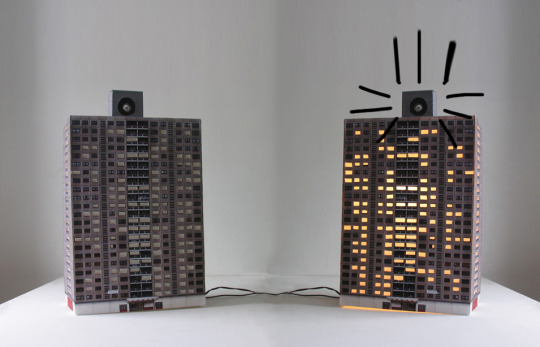Recap | Pop-Up Spaces: Innovative Ways to Showcase Your Art
When it comes to pop-up spaces, now is the time to seize the day!
Have you ever wondered whether a pop-up space is a viable option, and how to bring one to life? In June of 2017, Glenn D. Wright, Esq., The Wright Law Firm, P.C. and Robin Abrams, Vice Chairman-Retail and Principal, Eastern Consolidated, came to NYFA to discuss pop-up spaces from a legal and real estate perspective. Read on for advice and resources shared by Abrams and Wright at this presentation.
Why Pop-Ups, and Why Now?
In New York City and elsewhere, brick-and-mortar galleries are becoming increasingly difficult to maintain. In the face of rising rents and the growing dominance of online sales, pop-ups hold appeal for individual artists, emerging collectives, and organizations, as well established dealers and galleries who want to be rid of “‘the tyranny of the single space.’” Because of the current uncertain retail environment, and, in New York City, a “softening” real estate market in which there are more available spaces than demand from tenants, now is an ideal time to take advantage of the pop-up model. The benefits of this model include:
- the opportunity to test the market and gain exposure for your work or brand;
- in a well-chosen location, the chance to benefit from the buzz generated by a nearby event, established gallery scene, or art fair;
- the ability to rent a space that would otherwise be unaffordable. Empty spaces make a building look less attractive to long-term lessees, and so landlords may be willing to offer below-market rents in exchange for short-term, flexible leases. These short-term arrangements also help landlords ensure they’re not entering into long-term leases at the nadir, or low point, of the market. In Abrams’ opinion, you shouldn’t think a space isn’t feasible just because you may not be able to afford it in the long-term. It never hurts to ask!
Starting Your Search
A pop-up’s location, and a space’s condition, can be a big factor in its success. You can hire a broker that specializes in pop-ups and short-term rentals. If you have a certain neighborhood in mind, don’t hesitate to cold-call brokers in that area. If you’re planning a flash pop-up for a very short space of time, try online broker services like Storefront or pop-up go.
While industrial, outdoor, and other “off-beat” spaces, in Wright’s words, can be memorable, they may not be the best match for flash pop-ups. For very short-term arrangements, consider limiting your search to spaces already zoned for retail use. You’ll need to visit the Department of Buildings (DOB)’s website to verify whether a space has the correct Certificate of Occupancy (CO), which states a building’s legal use and/or type of permitted occupancy.
Many buildings in New York City manufacturing districts, like SoHo, were built before the Department of Buildings began requiring a Certificate of Occupancy. In these cases, a tenant can contact their DOB Borough Office to apply for a Letter of No Objection, which provides proof of a building’s legal use.
Vetting the Space
Most tenants will want a space that is in “vanilla box condition,” meaning it has a simple, open floor plan and white walls and is clean. All tenants should require that the space has a restroom and central air. Consulting with an architect or contractor will help ensure there are no structural issues with the space or potential violations of the Americans with Disabilities Act (ADA). If your arrangement is with the space’s current tenant instead of the landlord, have a lawyer read their lease to ensure they are permitted to sublet their space to you.
Other questions to ask:
- Does the space include 24-hour access?
- Are there restrictions on painting and other cosmetic work?
- Are there extra costs for utilities?
- Does the space include adequate amperage for your needs?
- Would the landlord need to give consent for any signage?
Furthermore, you’ll want to consider whether the neighborhood is a good match for your pop-up, and educate yourself about the space’s prior use. Did the previous tenant alienate neighbors? If so, forging a good relationship with the local community board or block association will be more difficult. Could the art itself, or your events, put you at odds with your neighbors? Could your plans for the gallery violate exclusivity clauses for other building tenants? These are all questions to answer before launching your pop-up.
Negotiating Your Stay
Once these kinds of questions have been answered, the next step is finalizing either a Lease or License agreement. Unlike leases, license agreements give the artist or gallery owner the right to use the space without being a tenant in possession. License agreements give both parties more flexibility in that they can more easily terminate an arrangement that is not working. License agreements are much simpler, and therefore more ideal for short-term arrangements in which both lessors and lessees want to keep legal fees to a minimum.
Though pop-ups are often short-term or one-off happenings, tenants should take many of the same precautions they would for long-term spaces. If there’s more than one principal shareholder involved, form a shareholder agreement; options include a Subchapter S Corporation, which is cheaper and involves less hassle to form, and a Limited Liability Company (LLC). LLC’s are especially useful for “roving galleries” that plan on setting up shop in different locations in the future, or in multiple locations at the same time. This is because LLC’s provide more ways to attract investors and raise capital as needed for various projects.
Every Corporation or LLC needs an Employer Tax ID Number (EIN). If you’re planning on selling art or other products through your corporation or LLC, you’ll need a Certificate of Authority to Collect Sales Tax from the New York State Department of Taxation and Finance. If a corporation or LLC is not compliant with all legal formalities and is sued, there is a chance that the individual shareholders may be held personally liable.
If the thought of legal fees is daunting, the NYC Department of Small Business Services (SBS) and the U.S. Small Business Administration (SBA) offer free legal assistance.
Your Pop-Up in Action
What if your pop-up is a hit? Don’t forget to plan for this best case scenario in advance. Inquire at the beginning of negotiations—not after your gallery has shown itself to be a success—as to whether your landlord would consider a long-term tenancy for your gallery. Or, perhaps the landlord owns a nearby, cheaper space you could occupy at a later date, which would give you the added benefit of maintaining the buzz and foot traffic you’ve generated.
If you’re going to hire employees, you will need to comply with several labor regulations. These include wage-and-hour laws at the Local, State, and Federal Levels. You’ll need to carry Workers Compensation and Disability Insurance, and the language you use to advertise open positions must not discriminate (see U.S. Equal Employment Opportunity Commission regulations.)
Finally, attendees may expect wine and beer at openings and other events. Many traditional galleries hold tavern-wine licenses, but these two-year licenses are not realistic for pop-ups. Instead, you can apply for a Special Event permit during the calendar year, but be sure to arrange for liquor liability insurance coverage.
Though any pop-up tenant will need to comply with a wide variety of regulations, taking precautions from the beginning will help make your pop-up a success when the time is ripe.
– Mirielle Clifford, Program Officer, Online Resources
This event is part of NYFA Learning, which includes professional development for artists and arts administrators. Questions? Sign up for NYFA’s free bi-weekly newsletter to receive updates on future programs, and visit NYFA’s Business of Art Directory to read more articles on this topic and others.
Image: eteam (Fellows in Architecture/Environmental Structures/Design ‘16), The ringing tower (unrealized project), 2006, high-rise building, telephone line, switch, lights, speaker system





